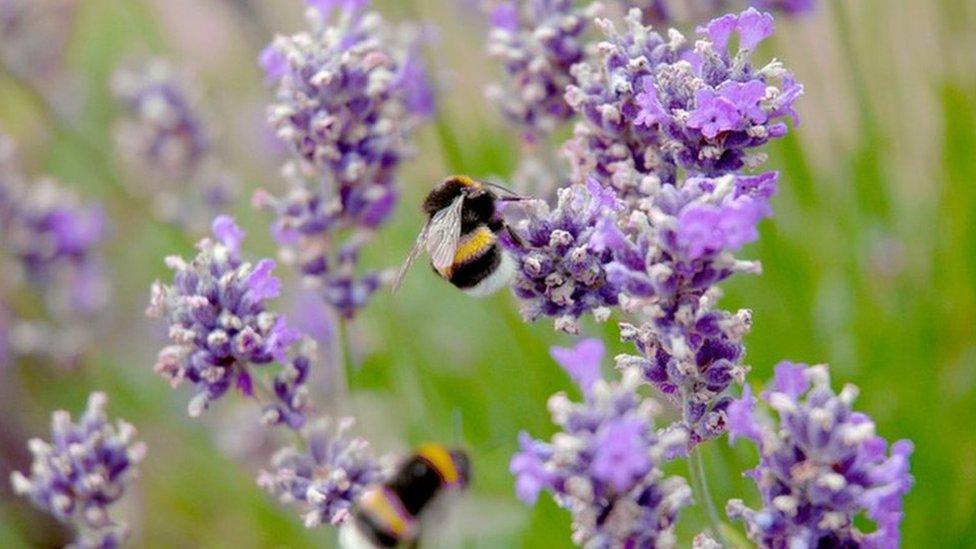Natural History Museum: New gardens to study how climate affects UK's wildlife
- Published
- comments

Hundreds of pollinating insects such as bumblebees and wildflower species will feature in the garden
We know that some animal and plant species are more affected than others by rising temperatures, but now experts are hoping to take a closer look at just how wildlife reacts to the impacts of climate change.
London's Natural History Museum is creating hi-tech gardens to find out which are the best plants for withstanding climate change.
Sensors installed across the site will monitor conditions such as temperature, humidity and sound.
The gardens will also allow researchers to look at the kind of life forms that makes these gardens home - from insects and birds to tiny microscopic organisms invisible to the human eye.
What will happen?
Birds such as goldfinches and robins will also form part of the study
Scientists are creating the gardens, around the museum's site in West London, as they want to build a deeper understanding of the biodiversity in UK's towns and cities and how it responds to conservation.
The site will allow researchers to study a variety of data including environmental information like soil and noise pollution as well as the impact it has, quickly and accurately.
Biodiversity is the range of animals, plants and microorganisms in a given area.
It is the foundation that supports all life and each member plays an important role.
If the number of one species is affected, there are almost always knock-on consequences to other living things in the ecosystem.
The future of our species on Earth depends on maintaining high biodiversity.
Researchers are hoping to see high biodiversity including species such as common frogs, toads and smooth newts in the ponds and birds like robins and goldfinches in the wooded areas.
Hundreds of pollinating insect and wildflower species including up to 20 species of bumblebee, will also form part of the study.
Researchers are hoping to see creatures such as frogs, toads and smooth newts in the ponds
Dr John Tweddle, from the Museum said: "We're really trying to build as much information as we can around the richness of wildlife we have in our gardens so we can start to track how and why it's changing.
"And then use that in a really positive way to help recover this nature in towns and cities, whether that's us or whether it's individuals and community groups," he added.
It's hoped the gardens will be ready by the end of next year, when they will open to the public.
- Published23 June 2020
- Published8 January 2022
- Published19 May 2020
